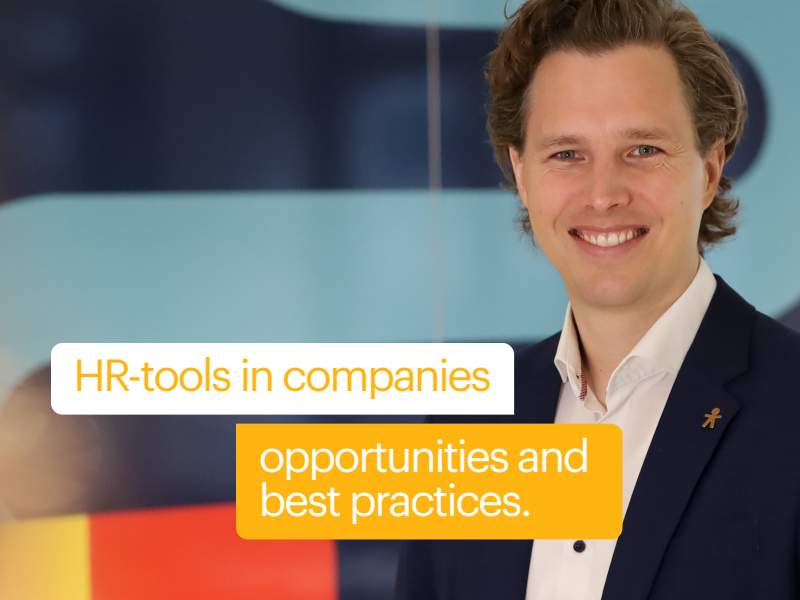dear reader
Well, for the benefit of anyone who didn't know, there are countless HR tools that are supposed to make our lives easier. But how do companies actually use these tools in a meaningful way? At Randstad, we use CruncHR and Peakon internally to facilitate the work of our hiring managers and managers - at least in theory. Because, of course, this never works as easily as you might imagine, at least often not right away.
The question of why we use different HR tools is no longer asked. Like many of you, we are simply no longer in the mood for mountains of paper and we are trying to work more efficiently. We follow the motto: work smarter not harder. Despite all the euphoria, however, caution is also required. Because technology has not (yet) replaced personal contact with the employee! Rather, it's about finding a balance between tech and touch in order to get an optimal, individualised result.
The opportunities opened up by artificial intelligence and new tools are manifold. For example, artificial intelligence can be used to automatically match applicant profiles with the requirements of the company. This saves time and resources when looking for suitable candidates - I have already touched on this topic, albeit somewhat critically, in my blog post on artificial intelligence in HR. HR technologies can also be used in the onboarding process or in the analysis of employee data to better integrate new employees and improve productivity. As you can see, there are hardly any limits to the opportunities here.
But let me make address the issue more concretely with an example. So how do we use our tools at Randstad? Essentially, these are two tools:
CruncHR is an HR tool that specialises in the analysis of personnel data. At Randstad, we use it to be able to control our people processes in a "fact-based" manner. This gives us insight into relevant KPIs such as the Stability Index, absenteeism, top talent management or diversity. The essential factors are analysed and acted upon on a monthly basis. The personal component still plays a role in people issues. However, personal judgements can now be confirmed or refuted on the basis of facts. We follow the motto "Facts beat Opinions". This approach has often opened our eyes to decisions about promotions or wage increases.
Our second tool, Peakon, on the other hand, focuses on employee feedback and engagement. This tool allows companies to conduct regular surveys to find out how satisfied
their employees are or what problems there are. We currently carry out such surveys every two weeks. Sounds excessive? Well, you're not wrong. But imagine, once we were doing it weekly... But you can't imagine the lengthy feedback questionnaires that often degenerate into a real marathon. For that reason, we have adapted, and ask for specific topics with about ten questions per survey. This means that we now have an 85% participation rate. That's pretty neat, isn't it? The results are then displayed in real time and used to take targeted measures to improve the working environment.
However, in my view, this way of working only makes sense if the results are acted on – in both positive and negative cases. This requires deployment of resources at all levels. We were not used to this in the beginning, which led to disappointment. That's because regular feedback fosters an expectation: people listen, and then they have to react; so why is nothing coming of what we are saying? That's why it's important for HR managers to be open and transparent about the outcomes that involve employees in improvement processes, as well as what's possible, when, and how. Because you can never meet all expectations, and if you do, often not as quickly as desired. This is about expectation management.
Looking back, our experience shows that the right use of HR tools can support companies in many ways. The prerequisite for this, however, is that the tools are fully integrated into the existing business processes and that they are always adapted to the needs of the employees and to the strategy. Otherwise, they can also lead to increased dissatisfaction - whether due to unfulfilled expectations or seriously time-consuming work processes.
And so with all this in mind, have fun in the brave new digital world.
Speak soon,
Bernhard
